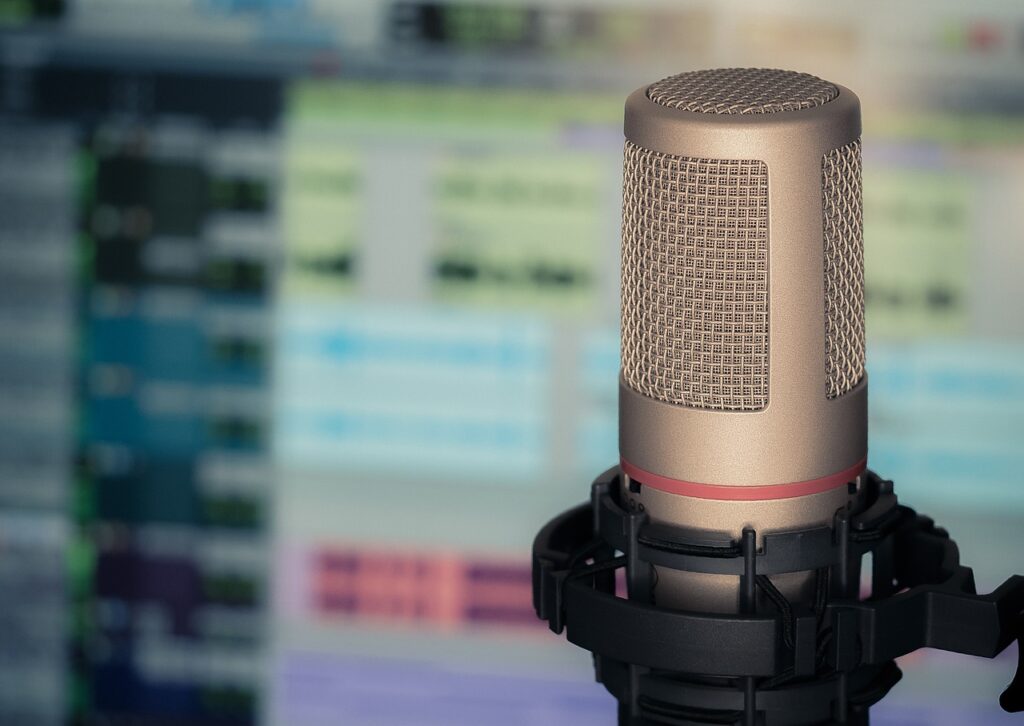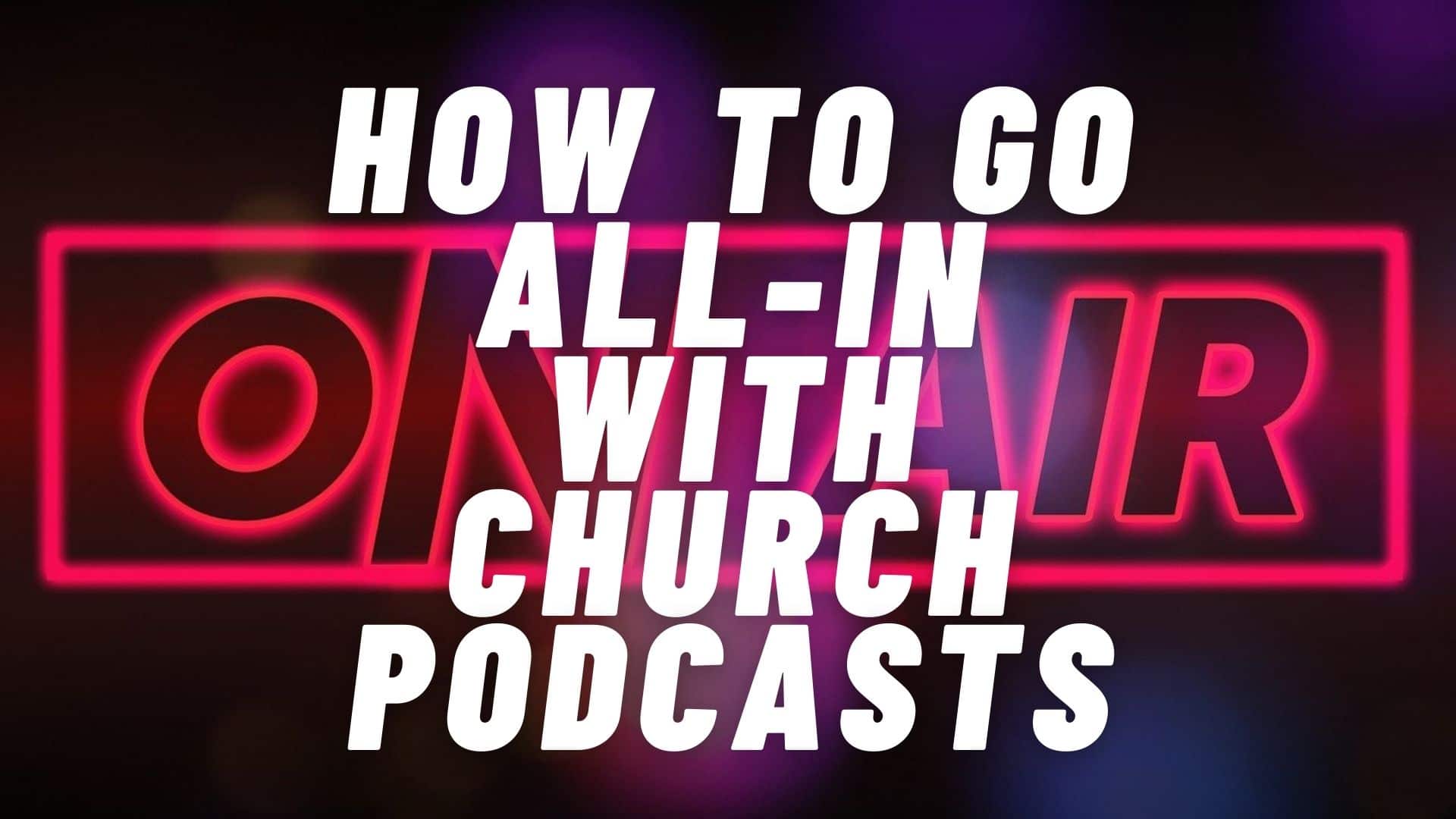The church podcast is becoming more and more popular. Podcasts are such an easy way to get your message out, especially when you’re looking for a highly engaged audience. If you’ve been thinking about starting a church podcast, but you’re not sure where to start, then this blog post is for you!
It will give you a great start so you can go all-in with your church podcasts. This post focuses on audio podcasts for churches – video podcasts bring a whole new set of factors to consider, so we’ll look at those in a separate post later on.
The Types of Church Podcast
The most common type of church podcast is a simple audio recording the Sunday service. If you’re planning on including music in your podcast, you’ll need to make sure you have the right licences, but most church podcasts don’t include music or worship songs.
This simplest way to create a podcast like this is to use an output from your sound mixing desk and record the service live. You can always tweak it later, but getting good source audio is vital.
While some churches have a dedicated sound technician to manage the church podcast (and they’ll often use an audio mixer), you might find it easier when you’re starting out to use just one or two microphones – then all you need is your computer.
Unfortunately, many microphones and desks are not directly compatible with connecting directly to a computer. This is to do with sound levels and the types of connectors available. The simplest way to get around this is to use an audio interface such as the Focusrite Scarlett 2i2 which provides a multitude of ports for connectivity.
You can connect the device to microphones or the output from your sound desk, and then use USB to connect to a PC or Mac, or even a dedicated MP3 recording device.
It’s also great to use for a second type of church podcast – the discussion podcast. Recorded separately from the main service, it can be a monologue, or a chat between several people.
The purpose of this podcast is to provide encouragement outside of the regular service, potentially expanding on the original message or discussing current events.
It gives people another way of connecting with the church, and can be useful for drawing more people in.

Microphones for Podcasting
If you’re running a live-service podcast, you’ll be using the microphones you already have. For a discussion podcast, you might want to invest in a Yeti USB microphone, one of the most popular microphones around.
Sound quality is excellent, and connectivity is simply a matter of plug and play. Designed with voice in mind, they aren’t the cheapest on the market, but do a fantastic job and tend to last for a number of years.
Recording Software
If you are using a digital recorder, most digital recorders come with basic editing software, so you won’t need to spend any money on this. However, as most churches are likely to be recording to a computer, there are a few solutions to look at.
Dedicated podcast recording software is available, but if you’re just starting out, you might want to try the free alternatives. One of the best is Audacity, a cross-platform program that is free and simple to use.
Just load up the software, choose your input device, and hit record. That’s it! if you start too early, Audacity includes features that allow you to trim the start (and end) of the podcast, and perform other functions on the recorded sound.
You can add effects, add an echo, change the pitch, or even play the podcast backwards – maybe you don’t need any of these features, but it’s an indication of the power of Audacity.
Volume levelling might be a better function – if your podcast is too quiet, or has some suddenly-loud sections, you’ll want to fix it.
You may also want to add a pre-recorded section at the start of your audio. Something as simple as, “Welcome to our church podcast from [church name] in [location]. Our regular services are at [details of location and time] and we’d love to see you in person.”
It add a little personal touch and serves as a gentle introduction to the service.
Finally, when you are happy with your audio, you can export it as an MP3 file.
Getting Your Podcast Out There
There are many platforms you can upload your audio to, including Buzzsprout and SoundCloud.
It’s worth noting, however, that not all of them are necessarily appropriate for church podcasts. For SoundCloud, your listeners will need to go to the SoundCloud website or app – Buzzsprout can be linked to other platforms like Apple Podcasts or Spotify, and you can use regular podcatchers (Pocket Casts, for example) to download the audio to your favourite device.
Getting Your Church Podcast Noticed
Of course, there’s no point in getting your podcast uploaded if nobody will hear it. A church podcast can be a great resource for churchgoers to listen again, but it can also be great for bringing more people to your church – but only if you promote it well.
Fortunately, there’s plenty of space to stand out on the podcast landscape. This guide to modern podcasting will give you the inside track on getting your podcast heard by the most people possible.
It’s not a free resource, but it’s not expensive either, and the cost-to-benefit ratio could be massive for your church podcast. The guide includes details on how to effectively plan your podcast, and options for monetizing your podcast – while this is not a priority for church podcasts, it can be helpful to see how you can promote events or items your church may have for sale.

Podcast with Passion
A church podcast is another ministry for your church mission. It isn’t “just” a recording of a message, it’s an opportunity for outreach. If you can get the marketing right, you’ll be on the playlist of potentially hundreds of people, spreading the gospel and brightening their lives.
Isn’t it time your church started a podcast?

